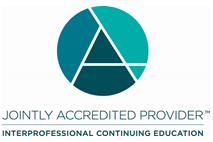Understanding the Complexity of Compassionate Care: A Deep Dive on Pain Management
In the wake of the recent conviction of the Vanderbilt nurse who caused a fatal medication error, many healthcare providers (particularly nursing) have grown significant concerns about the criminalization of medication errors in addition to the unraveling of a “Just Culture” health system approach that places the responsibility on the process rather than the sole person who committed the medication error (except for general intent cases). The aftermath of this unprecedented conviction has made healthcare professionals target drug classes with high levels of risk and liability that can cause harm, i.e., opioids and pain management and distance themselves from its uses even at the negative impact it may cause to the patient in chronic pain and/or needing palliative care. Among pharmacists, there is a gap between a deeper understanding of pharmacologic pain medication, optimization of pain medicine, and it’s benefits to patients being treated for various types of pain. Furthermore, there is a conflict on differentiating between pain management in the setting of opioid addiction and pain management for palliative/hospice care. Pharmacists (and pharmacy techs) can be impactful if their knowledge base of opioids and pain management strategies are enhanced. The ultimate goal for this program is to develop pharmacists and pharmacy technicians to becoming more astute in the area of pain management and provide potential advanced clinical practice support to professionals who need more insight in optimal pain management.
This continuing education will present the “Palliative Care Toolbelt” which will provide information on various pharmacologic classes used for palliative care (opioids, sedatives, and adjuvant analgesics) while also addressing symptom management, adverse effect prevention, medication assessment, medication safety practices and proper disposal procedures.
Target Audience
This activity is intended for physicians, nurses, pharmacists and pharmacy technicians.
Learning Objectives
Physician learning objectives
- Understanding opioid pharmacodynamics balancing risks/benefits with goals
- Identifying appropriate use of opioids in the palliative setting which will lead to better patient symptom management and experience
Pharmacist learning objectives
At the completion of this activity pharmacists should be able to:
- Apply appropriate pain assessment and titration strategies based on opioid pharmacokinetic properties
- Understand the pharmacodynamic and pharmacokinetic properties of common opioids used in acute pain management and utilize that knowledge for optimal dosing strategies
- Discuss common opioid adverse side effects and symptom management
Pharmacy technician learning objectives
At the completion of this activity pharmacy technicians should be able to:
- Recall commonly used drugs in adverse opioid effect symptom management
Nurse learning objectives
- After participating in this learning activity, participants will report intent to apply concepts learned at the preceptor academy education course to improve preceptor competencies.
Additional Information
| Attachment | Size |
|---|---|
| 134.81 KB |
Absence of Relevant Financial Relationships
Vizient, Inc., Jointly Accredited for Interprofessional Continuing Education, defines companies to be ineligible as those whose primary business is producing, marketing, selling, re-selling, or distributing healthcare products used by or on patients.
An individual is considered to have a relevant financial relationship if the educational content an individual can control is related to the business lines or products of the ineligible company.
No one in a position to control the content of this educational activity have relevant financial relationships with ineligible companies.
Faculty Presenters/Planners
India G. Scales, PharmD
Clinical Pharm Coordinator
Ochsner Medical Center-Northshore
Houston Bonnyman, MD
Palliative Care Physician
Ochsner Medical Center-Northshore

Joint Accreditation Statement:
In support of improving patient care, this activity has been planned and implemented by Vizient, Inc. and Ochsner Medical Center. Vizient, Inc. is jointly accredited by the Accreditation Council for Continuing Medical Education (ACCME), the Accreditation Council for Pharmacy Education (ACPE), and the American Nurses Credentialing Center (ANCC), to provide continuing education for the healthcare team.
Designation Statement:
PHARMACY
Vizient, Inc. designates this activity for a maximum of 1.00 ACPE credit hours.
UAN JA0006103-9999-22-048-L01-P
UAN JA0006103-9999-22-048-L01-T
Available Credit
- 1.00 ACPE Pharmacist
- 1.00 ACPE Pharmacy Technician

 Facebook
Facebook X
X LinkedIn
LinkedIn Forward
Forward